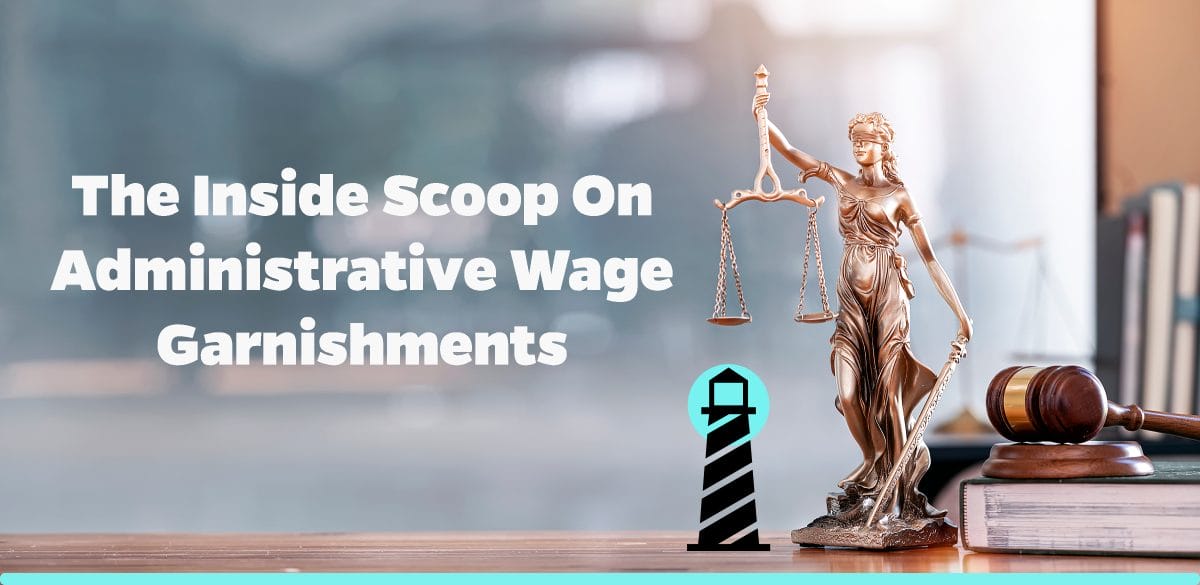Understanding Administrative Wage Garnishments: The Underrated Tax Beast
Understanding the mechanics of Administrative Wage Garnishment (AWG) is critical for every working individual in the United States. Designed by the federal government as a means of reclaiming unpaid debts, this tool can have significant implications for an individual’s financial health. In this comprehensive guide brought to you by Brightside Tax Relief, a leading nationwide tax relief company, we will delve into the intrinsics of AWG, shedding light on its implications, processes, and alternatives available.
Gaining Insights into Administrative Wage Garnishments
An AWG is essentially a non-judicial process that federal agencies can use to collect debts by garnishing, or withholding, a certain percentage of an individual’s disposable income without obtaining a court order. The scope and scale of this process are governed by the terms outlined in the Debt Collection Improvement Act (DCIA) of 1996, which allows for garnishment of up to 15% of the debtor’s disposable income.
Noteworthy aspects about AWG include:
– It’s not required to get a court order to commence.
– It can garnish up to 15% of your disposable income.
– The withheld income goes directly to repay the federal agency to whom you owe the debt.
The reach of AWG extends to all kinds of federal non-tax debts, ranging from student loans to small business loans.
The Process of Administrative Wage Garnishments
Generally, the AWG process unfolds in a series of steps, allowing for notifications and dispute resolutions. The initial phase involves the federal agency sending a notice of intent to the debtor. This notice outlines the nature and amount of the debt, the agency’s intent to initiate AWG, and the rights of the debtor. After receiving this notice, the debtor has 30 days to either repay the debt in full or agree to a voluntary repayment plan. If neither of these options is followed, the agency proceeds with the AWG.
Once the AWG process begins, the employer of the debtor receives a wage garnishment order. The employer is legally obliged to withhold the specified sum from the debtor’s paycheck and send it to the federal agency.
Your Rights and Remedies During Administrative Wage Garnishments
Despite the imposing nature of an AWG, it’s important to understand that you, as a debtor, have significant rights at your disposal. Firstly, you have the right to be notified before the AWG begins and you have a window of 30 days to respond to the attempted garnishment. You also have the right to inspect records related to the debt, to enter a written repayment agreement, and to a hearing regarding the existence or the amount of the debt.
In addition to these rights, you can also court intervention in specific situations. For instance, if the garnishment causes severe financial hardship, you can seek legal recourse.
How Brightside Tax Relief Can Help
AWGs can be an overwhelming and daunting process to navigate alone. This is where Brightside Tax Relief comes into the picture. With our extensive experience and nationwide network, we can guide you through the AWG process.
We understand that every individual’s circumstances are unique, so we tailor our services to your specific needs. From reviewing the legitimacy of the AWG notice to assisting with a potential hearing request, we can help you at every step of this complex process, giving you the respite and professional support you need.
Conclusion: Navigating the Intricacies of Administrative Wage Garnishments with Brightside Tax Relief
AWGs may seem intimidating, but having the right guidance and understanding can make a world of difference. Knowledge is power, and in the context of AWGs, it can be the difference between financial stability and hardship. Partner with Brightside Tax Relief to ally yourself with an experienced companion in this financial journey. Visit the IRS website for more information about AWGs. Together, we can conquer the beast of Administrative Wage Garnishments.




